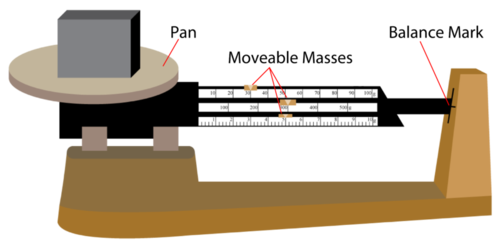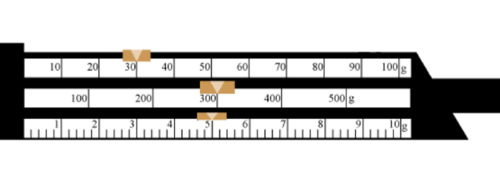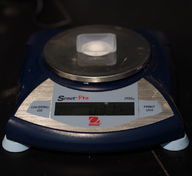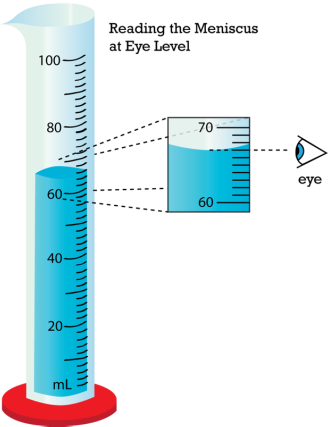|
Measuring Length with a Metric Ruler You’ve probably been using a ruler to measure length since you were in elementary school. But you may have made most of the measurements in English units of length, such as inches and feet. In science, length is most often measured in SI units, such as millimeters and centimeters. Many rulers have both types of units, one on each edge. The ruler pictured below has only SI units. It is shown here bigger than it really is so it’s easier to see the small lines, which measure millimeters. The large lines and numbers stand for centimeters. Count the number of small lines from the left end of the ruler (0.0). You should count 10 lines because there are 10 millimeters in a centimeter. Q: What is the length in millimeters of the red line above the metric ruler? A: The length of the red line is 32 mm. Q: What is the length of the red line in centimeters? A: The length of the red line is 3.2 cm. Measuring Mass with a Balance Mass is the amount of matter in an object. Scientists often measure mass with a balance. A type of balance called a triple beam balance is pictured in Figure below. To use this type of balance, follow these steps:
The Figure below is an enlarged version of the scales of the triple beam balance in Figureabove. It allows you to read the scales. The middle scale, which measures the largest movable mass, reads 300 grams. This is followed by the top scale, which reads 30 grams. The bottom scale reads 5.1 grams. Therefore, the mass of the object in the pan is 335.1 grams (300 grams + 30 grams + 5.1 grams). Q: What is the maximum mass this triple beam balance can measure? A: The maximum mass it can measure is 610 grams (500 grams + 100 grams + 10 grams). Q: What is the smallest mass this triple beam balance can measure? A: The smallest mass it can measure is one-tenth (0.1) of a gram. To measure very small masses, scientists use electronic balances, like the one in the Figure below. This type of balance also makes it easier to make accurate measurements because mass is shown as a digital readout. In the picture, the balance is being used to measure the mass of a white powder on a plastic weighing tray. The mass of the tray alone would have to be measured first and then subtracted from the mass of the tray and powder together. The difference between the two masses is the mass of the powder alone. Measuring Volume with a Graduated Cylinder At home, you might measure the volume of a liquid with a measuring cup. In science, the volume of a liquid might be measured with a graduated cylinder, like the one sketched below. The cylinder in the picture has a scale in milliliters (mL), with a maximum volume of 100 mL. Follow these steps when using a graduated cylinder to measure the volume of a liquid:
Q: What is the volume of the liquid in the graduated cylinder pictured above?
A: The volume of the liquid is 67 mL. Q: What would the measurement be if you read the highest point of the curved surface of the liquid by mistake? A: The measurement would be 68 mL. This text was adapted from CK12.com. It is licensed under the Creative Commons (CC BY-NC 3.0) When measuring it is important to consider if your measurements are accurate and/or precise. For more information see the next blog post.
2 Comments
12/15/2016 11:52:13 am
I found the graphic for how to read the triple beam balance to be very helpful. It shows that the three movable masses do not need to stay close to each other. It is much easier for me to understand by seeing a picture than it would have been just reading words. I will have to use a picture when I do an upcoming science project with the neighborhood science group.
Reply
Leave a Reply. |
For the length animation chose measuring "tenths" under the centimeters heading.
First day homework assignment. This is not so much about measuring as following instructions and thinking outside the box. However, careful measuring is important for this assignment so you will make a proper square at the end.
|




